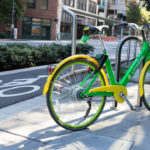 While bike-sharing schemes may seem ubiquitous across modern cities, there remain pockets where populations are not served well at all. A recent paper from Portland State University explores some of the factors that influence the availability of this increasingly popular mode of urban transport.
While bike-sharing schemes may seem ubiquitous across modern cities, there remain pockets where populations are not served well at all. A recent paper from Portland State University explores some of the factors that influence the availability of this increasingly popular mode of urban transport.
The researchers examined evidence from three American cities (Chicago, Philadelphia, and New York) to explore the use and interest in bike-sharing schemes among people of color and lower-income residents.
Lower usage
The paper tested the hypothesis that usage of bike-sharing schemes was lower among these groups than among higher-income and white communities. The authors utilized data from people who live near bike-share stations in each city.
They found that people who are not members, but are interested in using bike share, including POC, are motivated to use bike share for fun, recreation, and social reasons (as opposed to utility).
Knowledge of bike share and receiving information from interactive sources (for example, bike share ambassadors) are also strongly associated with bike share use.
Cost is a barrier for people who are interested in using bike share, but are not members, however. Discounted memberships are one solution, but survey results indicate that many people do know about them.
Some reasons for not using bike share among people of color and lower-income people may also be related to reasons for not bicycling, generally. These include concerns about traffic safety as well as personal safety.